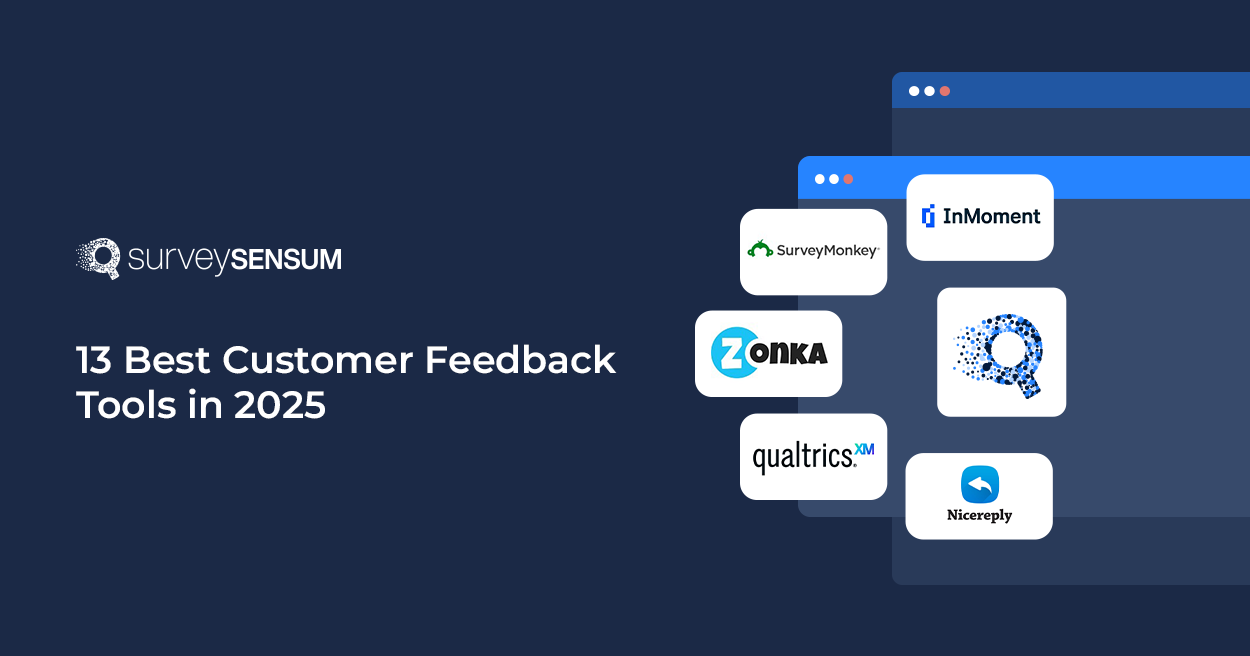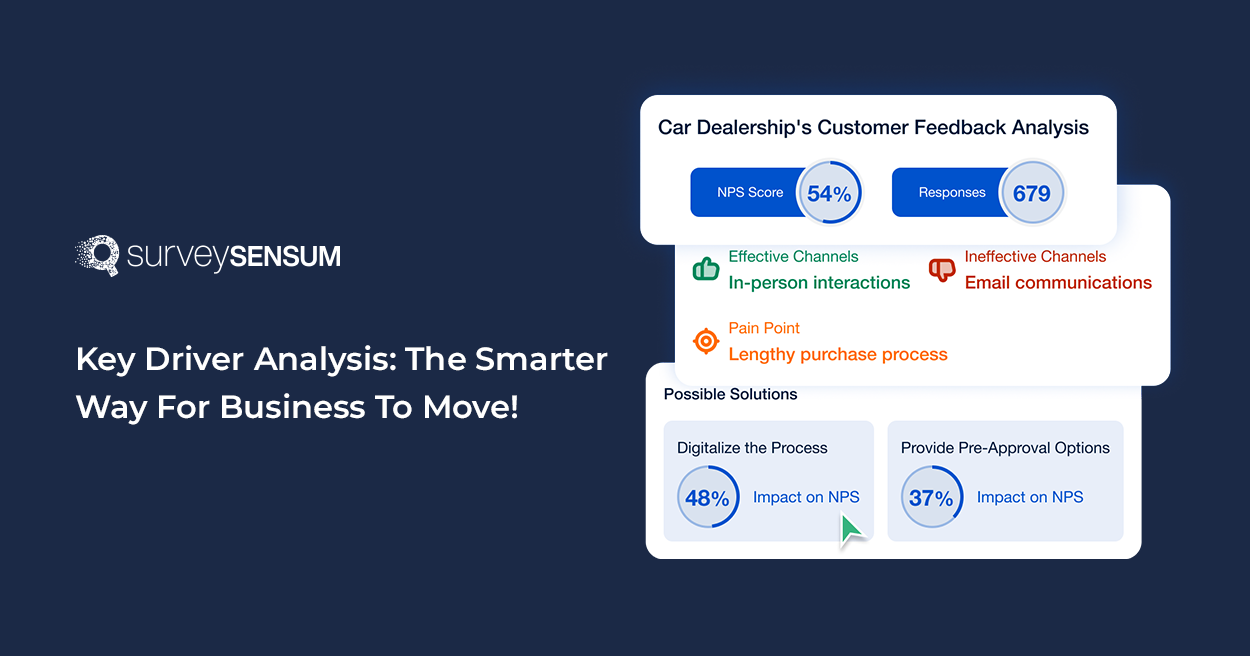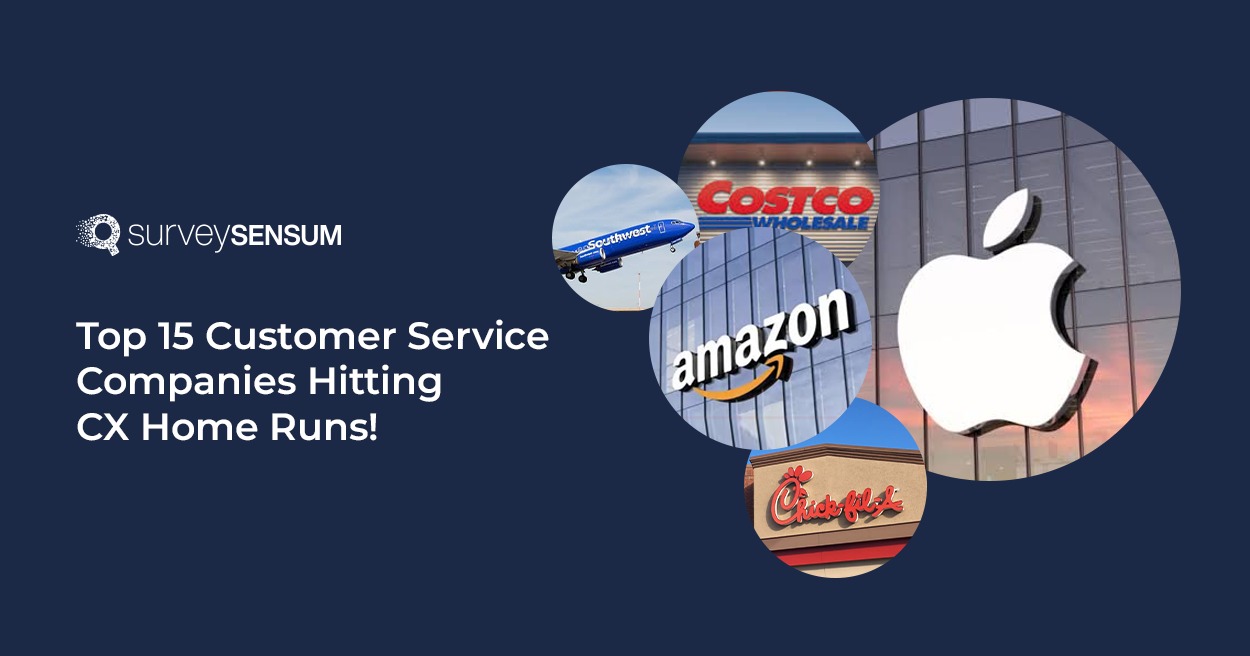
A retail company, MagnetHome enthusiastically embraced the Net Promoter Score and started measuring customer loyalty. They gathered all the responses diligently but stumbled into the “Everyone’s-the-Same” trap – treating all scores equally. High scores delighted them, so in the excitement they missed the silent grumbles of unhappy customers. This led to the team missing out on understanding the real issues!
Amidst the rush for scores, they started losing the customers, without any clue!
And the amusing part, had they analyzed the NPS Score correctly and were not just ‘focusing on the number’ they’d have identified their detractors pretty early. Not just that, this would have helped them understand the issues well in time, leading to the prevention of churn!
But, like many, they were ONLY focusing on – the one number that needs to grow!
That sounds rather unfortunate, right?
Well, this is a classic example of an NPS analysis gone wrong. It’s not just MagnetHome, many organizations do the same for either of the following reasons –
- They either focus only on the NPS score and not only on the feedback
- Or they don’t know how to properly analyze the NPS feedback (or leverage the power of a robust NPS software for quick analysis ).
I’m sure you don’t want to make the same mistakes. But the challenge is, how to analyze the NPS feedback to leverage it to its best potential!
Well, after implementing the NPS strategy in over 40 organizations, I’ve created a list of 6 rookie blunders that you must avoid to keep your NPS Analysis fool-proof!
Now, let’s delve into the common mistakes to avoid when analyzing NPS feedback. But first, let’s understand what I mean by NPS analysis and why I consider it so important.
What is NPS Analysis?
NPS analysis can be referred to as the process of analyzing NPS survey data to measure overall customer loyalty and identify key pain points and areas of improvement. It is the process of breaking your overall NPS score into categories of promoters(9-10), passives(7-8), and detractors(0-6).
However, that’s not it. By asking NPS follow-up questions, you can take the process of NPS analysis further and analyze why customers gave their ratings and what actions can be taken to improve their experience.
But, Why Is NPS Analysis Important?
Let’s dive deeper into why NPS analysis is essential for business growth.
- Predicts Customer Loyalty: A higher NPS score is a strong indicator of customer retention and brand advocacy. The more promoters you have, the more likely customers are to remain loyal and continue doing business with you.
- Helps Prioritize Improvements: NPS analysis doesn’t just tell you how satisfied customers are – it helps you understand the why behind their experience. By analyzing open-ended survey responses, businesses can identify recurring themes and pain points that impact customer satisfaction.
- Boosts Revenue and Growth: Companies with a high NPS score often experience faster revenue growth because satisfied customers become powerful brand advocates. In fact, according to Bain & Company, on average, an industry’s Net Promoter leader outgrew its competitors by a factor greater than two times.
- Provides Competitive Insights: Benchmarking your NPS against industry standards and competitors helps businesses identify where they stand in the market and pinpoint areas for competitive advantage.
Now without further ado, let’s talk about some of the rookie mistakes businesses make when it comes to NPS analysis.
6 Common Rookie Mistakes in Net Promoter Score Analysis
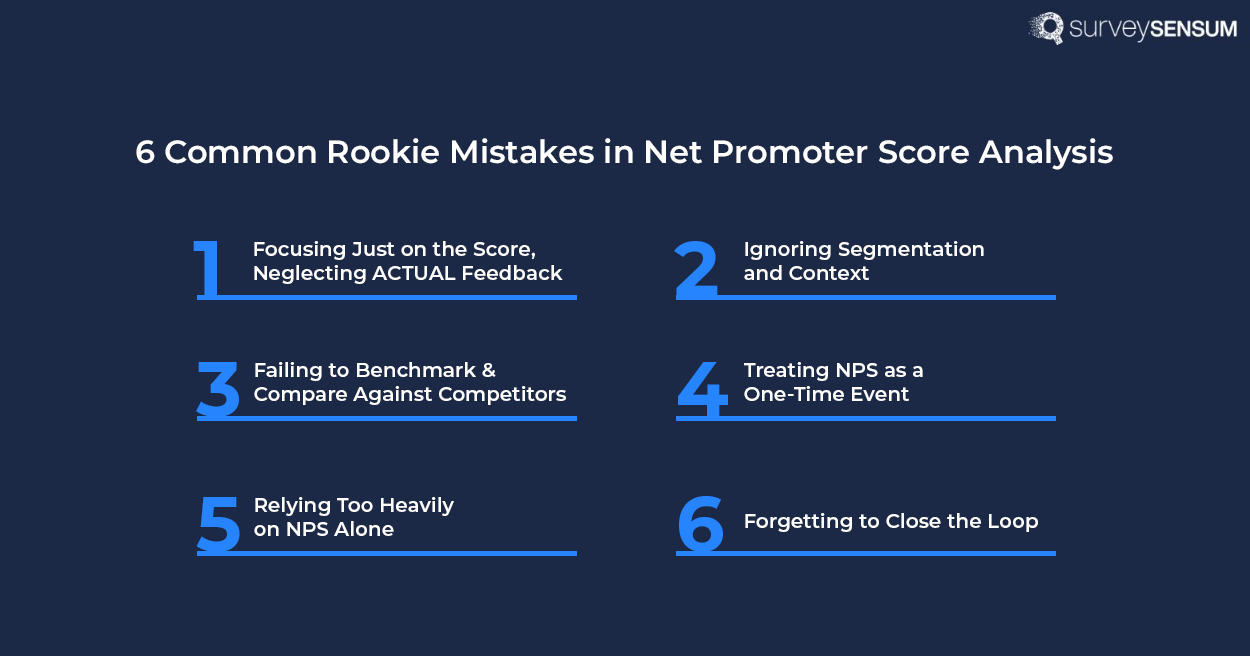
1. Focusing Just on the Score, Neglecting ACTUAL Feedback
Yes, the businesses that prioritize customer feedback have 1.6 times higher customer satisfaction rates than their peers, but that’s only when they actually listen to the Voice of the Customer for the sake of resolving the issue and offering better customer experience rather than just for the show.
Problem: Many companies make the mistake of solely focusing on measuring and calculating NPS, and neglect the valuable insights hidden in the open-ended feedback. This tunnel vision leads to a fixation on scores rather than understanding the underlying issues customers face.
Impact: By focusing just on an NPS scale question and overlooking open-ended feedback, you miss the actual struggles and pain points that your customers are sharing. Now when you do this, you won’t have the insightful data that could have helped you take appropriate actions and resolve customer issues in time.
What does this lead to?
Your customers might share their feedback with you once or twice, but when they feel like their voices are not being heard, they’ll stop responding – leading to low NPS response rates and a lower score.
Solution: Open-ended questions are a gold mine of feedback. Every single thing that people like, or dislike is mentioned here. All you need to do is dig deeper with AI-enabled tools like Text Analytics and use this feedback to figure out what needs fixing and then actually do something about it.
→ And here’s the thing – it’s not just about fixing problems behind the scenes. It’s about telling customers, “Hey, we heard you, and here’s what we’re doing about it.” That kind of transparency builds trust and shows customers that their opinions matter.
Example: A mobile phone company receives a high NPS score from its customers. However, upon analyzing the open-ended feedback, they discover recurring complaints about the battery life of their latest model. Instead of addressing this issue, the company focused solely on the high score, and missed the opportunity to improve the product and this eventually led to customer churn.
2. Ignoring Segmentation and Context
Don’t ignore segmentation in NPS analysis because it helps you understand what different groups of customers are saying. If you treat all customers the same, you might miss important details that could improve their experience. By looking at different segments, like age groups or types of customers, you can focus on what matters most to each group. This way, you won’t waste time and resources fixing things that aren’t really a problem for some customers, and you can make sure everyone gets the best experience possible.
Problem: Treating all customers the same is like trying to fit everyone into the same-sized shoe – it just doesn’t work! Each customer group has unique needs and preferences, and ignoring this diversity can mean overlooking critical issues that impact specific segments.
Impact: It’s not just a minor hiccup; it’s like fixing a leaky roof without knowing which room is getting wet. Ignoring segmentation can waste resources on fixes that don’t resonate with anyone. Moreover, it blinds businesses to the areas where real improvements are desperately needed.
Solution: Companies should break down their NPS data to see what different groups of customers are saying. This way, they can focus on fixing things that matter most to each group.

Did you know Spotify uses segmentation to tailor its music recommendations? By analyzing users’ listening habits, playlists, and preferences, Spotify provides personalized suggestions, creating a more individualized and engaging experience for each user.
3. Failing to Benchmark & Compare Against Competitors
According to a report by Forbes, 81% of businesses with a formalized benchmarking process in place believe that it significantly improves their competitiveness in the market.
NPS benchmarking against industry standards is a compass guiding businesses through the vast sea of customer satisfaction. It provides a crucial frame of reference, enabling companies to navigate their performance with peers. This comparative analysis is not just about numbers; it’s a strategic tool that unlocks several key benefits.
Problem: Some companies only look at their own NPS score without comparing it to others in the same industry. This can make it hard to tell if they’re doing well or not. Neglecting to benchmark against industry standards can plunge businesses into a sea of ambiguity.
Impact: It can give a false sense of security or cause missed opportunities to learn from others. Without this external perspective, a high NPS might breed complacency, as the true competitiveness of the score remains obscured. This isolated interpretation can lead to missed opportunities for learning from industry leaders and adapting to evolving customer expectations.
Solution: Well, the remedy lies in actively comparing the NPS score to others in the same industry. This strategic move provides a reality check, offering a clear understanding of the company’s relative performance.
Basically, it helps them see where they’re doing well and where they could improve. It becomes a powerful tool for recognizing strengths to build upon and weaknesses to address, ensuring that improvements are not based on internal assumptions but are informed by external standards and best practices.
Example: Consider a SaaS company celebrating a commendable NPS score without peering beyond its own successes. Upon benchmarking against industry standards and competitors’ scores, they discover a stark reality – their SaaS NPS benchmark is notably lower than their main rival. This revelation serves as a wake-up call, prompting the company to dig deeper. They investigate specific areas where they lag, such as delivery speed or customer support responsiveness. Armed with this knowledge, they implement targeted strategies to bridge the gap, enhance their offerings, and stay competitive in the ever-evolving market.

Delta Air Lines, a major airline, employs benchmarking to assess its on-time performance, customer service, and overall operational efficiency against industry standards. This approach enables Delta to identify opportunities for improvement and maintain a competitive position.
It’s not just about knowing your score – it’s about understanding where you stand in the market. Compare your NPS with competitors with SurveySensum and take strategic actions to improve customer satisfaction!
4. Treating NPS as a One-Time Event
Research by the Temkin Group indicates that companies with higher NPS scores, achieved through regular measurement, tend to experience higher revenue growth rates. I’m sure you would want the same for your company!
Now, as you see, you need to create NPS surveys regularly. How else would you know if the changes you made actually had an impact or not, right?
Problem: Some companies make the mistake of treating Net Promoter Score as a one-time event, a snapshot frozen in time. They gauge customer sentiment, make changes, and move on without realizing that customer perceptions change over time. This oversight undermines the dynamic nature of customer satisfaction.
Impact: Neglecting continuous NPS implementation is like planting a garden and never watering it. The initial bloom might be impressive, but without ongoing care, it withers. Failing to track progress and follow up on NPS insights means missing out on understanding the long-term impact of changes. It renders the NPS measurement a mere formality, devoid of its true potential for driving sustained improvement.
And when you’ve already put in the effort, why go home without a reward?
Solution: Therefore, you need to embrace NPS as an ongoing journey, not a one-stop destination. Companies need to implement NPS consistently, gathering feedback at regular intervals to capture the evolving customer landscape. This approach allows them to track the impact of implemented changes, identify emerging trends, and continuously refine their strategies based on real-time customer insights which ultimately helps in improving customer retention rates.
Consider a tech company that conducts an NPS survey, identifies a need for improved customer support, and rolls out training for its support team. Treating NPS as a one-time event would mean assuming the issue is resolved. However, by implementing NPS continuously, the company realizes that while initial scores may have improved, there are new concerns about response times. This ongoing feedback loop prompts the company to adjust its strategies, ensuring a more comprehensive and sustained enhancement of customer satisfaction.
5. Relying Too Heavily on NPS Alone
Problem: Relying solely on NPS for customer feedback is like seeing only part of the picture. While it provides an overall score for customer loyalty, it overlooks crucial details. Many companies make this mistake, using NPS as their main measure of satisfaction without considering other vital aspects of the customer experience.
Impact: This narrow focus means missing important touchpoints in the customer journey, such as onboarding and delivery experiences. Without additional customer satisfaction metrics like CSAT and CES, businesses risk overlooking specific pain points or areas for improvement. This limits their ability to enhance the overall customer experience effectively.
Solution: To address this, businesses should take a more holistic approach to NPS feedback analysis. Alongside NPS, they should use CSAT and CES to gauge transactional experiences at different touchpoints. By doing so, they can identify specific issues systematically and make targeted improvements to enhance overall satisfaction and loyalty.
Imagine a fitness app company relying solely on NPS scores to measure customer satisfaction. Unfortunately, this narrow focus led them to overlook crucial metrics like user engagement and app usage patterns. Had they analyzed additional metrics such as session duration, login frequency, and completion rates for workout challenges, they could have gained deeper insights into customer interactions with the app. This broader approach would have enabled them to identify areas for improvement, such as enhancing user onboarding experiences or introducing new features to boost engagement levels.
6. Forgetting to Close the Loop

One of the crucial key things that often gets overlooked in the NPS analysis is – closing the feedback loop. It’s not just about grabbing scores; it’s about reaching out to the customers who took the time to respond. This isn’t just a follow-up; it’s a game-changer. It turns NPS from a simple measurement tool into a trust-building, loyalty-fostering powerhouse.
Problem: Imagine you ask for advice, and then it feels like no one’s paying attention. That’s what happens when companies don’t close the loop with NPS feedback. Neglecting to close the loop sends a signal that their opinions are undervalued. This can undermine the credibility of the entire NPS program, as customers may perceive it as a token gesture rather than a genuine commitment to improvement.
Impact: Customers appreciate being heard and seeing tangible results from their feedback. When companies fail to act on NPS insights, trust erodes. Customers may question the sincerity of the NPS initiative and, by extension, the company’s dedication to their satisfaction. This breakdown in trust can result in diminished customer loyalty, as consumers may feel their feedback is falling on deaf ears.
Solution: Companies should thank customers for their feedback, explain what they’re doing with it, and keep them updated on any changes made.
For example, consider a scenario where an online retailer collected NPS feedback from customers but neglected to follow up with them to address their concerns or express appreciation for their feedback. Consequently, dissatisfied customers felt ignored and opted to switch to a competitor. If the retailer had implemented a system to close the feedback loop, such as sending personalized follow-up emails or making customer service callbacks, they could have demonstrated their dedication to customer satisfaction, thereby improving overall loyalty and retaining more customers.
SurveySensum’s closed-loop ticketing system instantly flags and escalates every piece of negative feedback from detractors to the appropriate team. Personalized alerts and actionable insights enable team members to efficiently close the loop, while ticket trends can be tracked to measure resolution time and open ticket count.
SurveySensum’s AI real-time ticketing system never misses a critical issue again – automatically flag incoming negative feedback, assign tickets to the right team, and keep track of ticket resolution with real-time monitoring!
Now that you know what mistakes to not make while implementing different types of NPS in your company, you ought to know the correct ways to analyze all the NPS feedback that you will receive! Here’s how you can do it.
How to Analyze the NPS Feedback?
To make sure your resources do not go to waste, here is a step-by-step guide to help you enhance your Net Promoter Score analysis in just the right way:
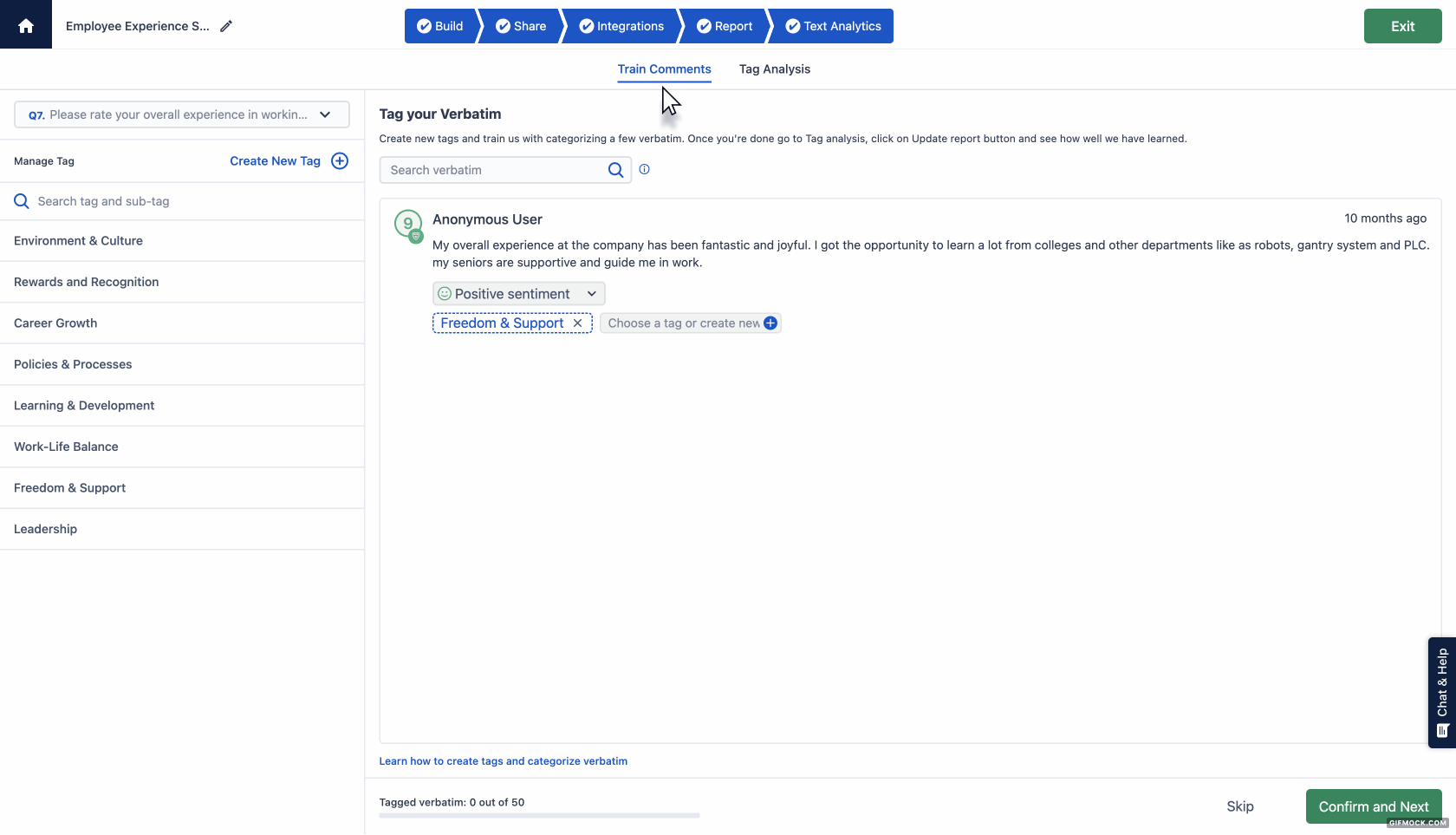
STEP 1: Categorize Responses into Tags and SubTags
Organize open-ended responses into predefined topics (e.g., Functionality, Usability) and tag sentiments (Positive, Negative, Neutral). This categorization quantifies results and provides context to NPS scores. And the best part?
AI does the categorization for you! The platform enables the processing of and deriving insights from 10,000+ feedback responses in just five seconds, significantly enhancing efficiency and decision-making.
STEP 2: Analyze Based on Demographics
Utilize demographic data to segment customers, understanding which groups have more Promoters or Detractors. Identify preferences appealing to different demographics for more customized experiences. With this you can create brand advocates and focus specifically on negative feedback.
STEP 3: Identify Root Causes
Deep dive into the complaints and validate them with customers. Engage frontline staff to integrate their insights, and importantly, communicate directly with customers. Follow up with them, express empathy, offer apologies, and comprehend the issues at hand as well as their expectations for resolution.

STEP 4: Detect Trends Over Time
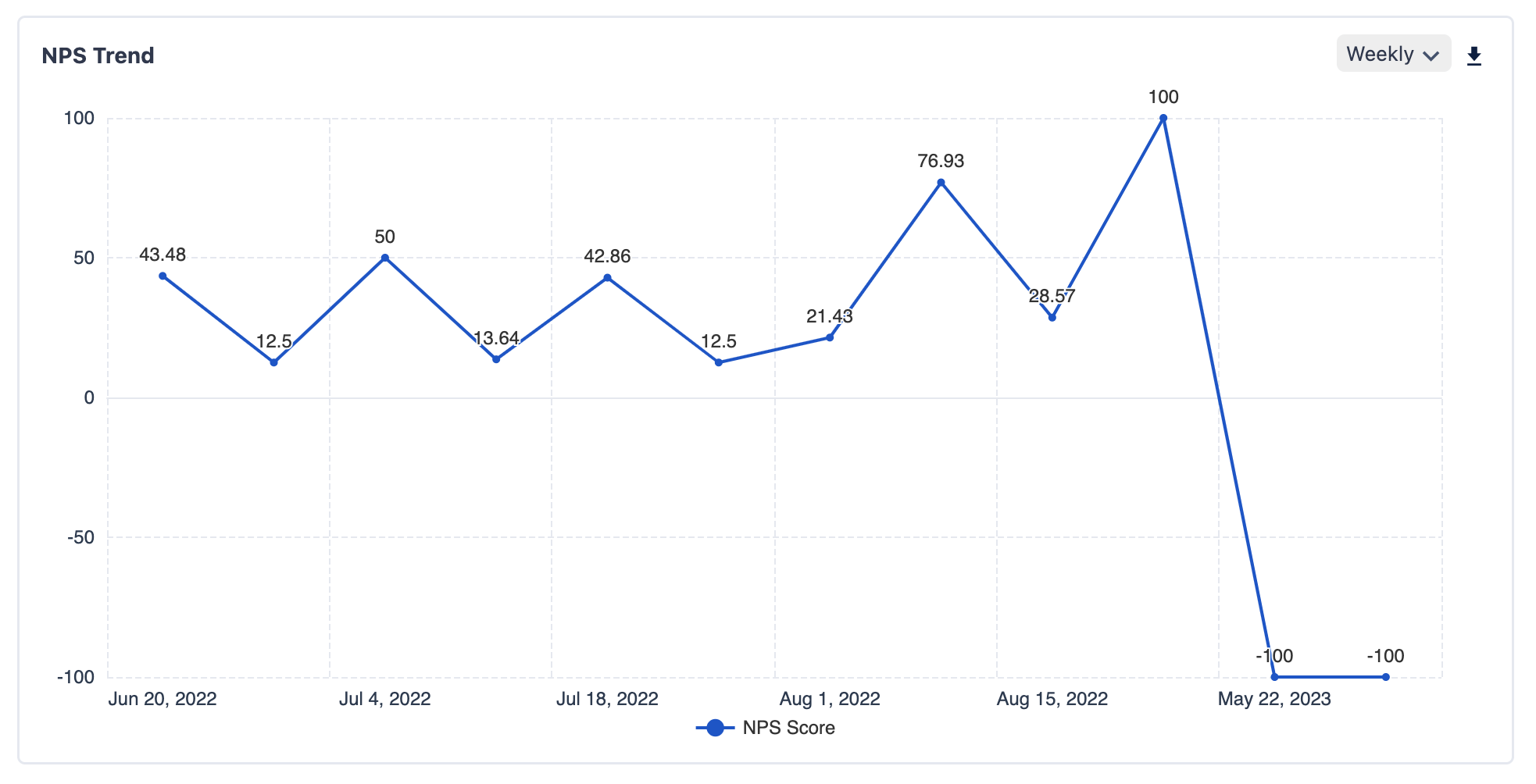
Track survey results periodically, searching for trends. Regularly sending surveys helps identify changes in customer behavior or opinions. Analyze feedback over time to pinpoint preferences, dislikes, and potential issues.
STEP 5: Share Results with Teams
Distribute actionable insights across relevant teams. If there are complaints about a mobile app, share NPS results with the product team. After pinpointing the main concerns and verifying them with your customers, the subsequent stage involves assigning these issues to the relevant departments and utilizing the insights to formulate an effective action plan.
STEP 6: Measure Your Impact
Following the implementation of changes based on customer feedback, a notable improvement in customer satisfaction and overall brand experience will be evident through the NPS survey insights. This can be validated by observing key indicators such as an increase in the NPS number, a reduction in the occurrence of negative tags, and an enhancement in customer sentiment associated with those tags.
So, the next time you undertake the analysis of your NPS, make sure to adhere to these six crucial yet remarkably straightforward steps. When completed, you can expect a significant enhancement in the success rate of your NPS program!
Surveysensum’s AI-powered NPS software doesn’t just collect scores – it helps you understand customer sentiment, track changes, make smarter CX improvements, and ultimately turn your feedback into revenue!
Now before wrapping up let’s talk about a few NPS best practices to follow for better results.
NPS Analysis Best Practices for Increasing Customer Satisfaction
Don’t Survey Your Entire Customer Base All at Once
Surveying your entire customer base at the same time may seem like a good way to get a comprehensive snapshot of customer sentiment, but it can lead to several challenges. Large-scale surveys often result in low response rates due to survey fatigue, and they don’t account for variations in customer experience over time. Instead, use a rolling survey approach, collecting NPS data in smaller, more frequent waves. This method helps you track trends more accurately, gain real-time insights, and make timely improvements.
Don’t Compare Data from Different Geographies
Customer expectations, cultural differences, and market conditions vary significantly across regions. Comparing NPS data from different geographies without considering these factors can lead to misleading conclusions. Instead, analyze NPS scores within specific regions and benchmark them against local industry standards. This approach ensures that your insights are relevant and actionable for each market, leading to more effective customer experience improvements.
Conclusion
In the realm of Net Promoter Score analysis, the key lies not just in measuring but in understanding, adapting, and evolving. As businesses navigate the intricate landscape of customer satisfaction, these lessons serve as a compass, guiding them toward customer-centric excellence and ensuring that the journey is as rewarding as the destination.
So, with this blog, you can get to know the things that you should not do along with a step-by-step guide on how to analyze NPS results the right way. Implementing these steps the correct way will help you get the maximum value out of your NPS feedback.
To extract optimal insights from your NPS feedback, using an effective NPS tool such as SurveySensum is crucial. This platform helps in crafting tailored NPS surveys, dissecting verbatim responses, swiftly closing the feedback loop, and ultimately fostering enhanced connections with your customer base.













